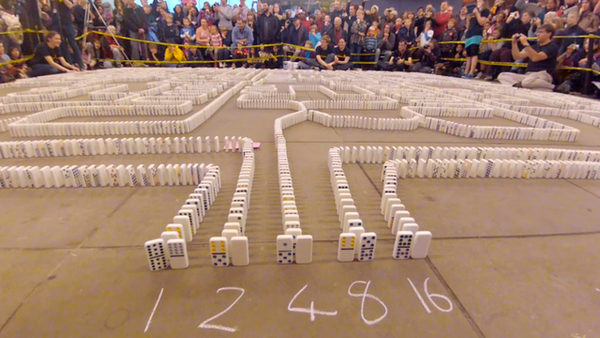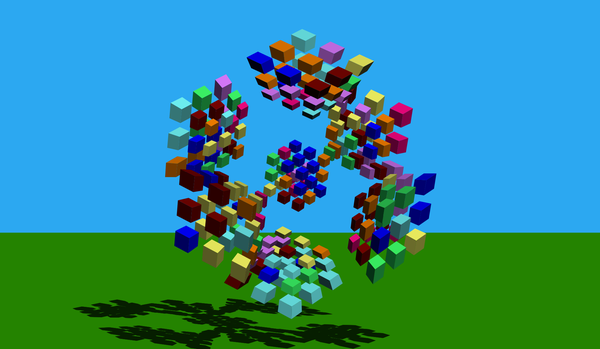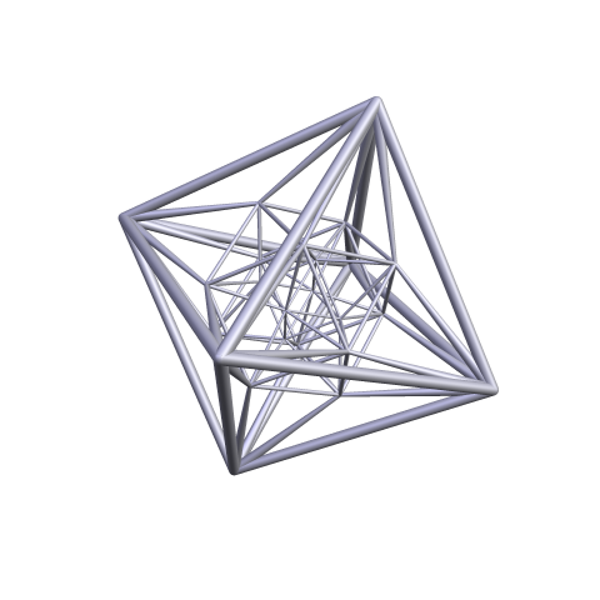Things to Make and Do in the Fourth Dimension: A Mathematician's Journey through Narcissistic Numbers, Optimal Dating Algorithms, at Least Two Kinds of Infinity, and More, by Matt Parker. Farrar, Straus and Giroux, 2015; 464 pages.
Mathematics popularizer Matt Parker, an Australian based in England, is a self-proclaimed “standup mathematician” perhaps best known for his numerous contributions to the Numberphile YouTube channel.He is also the Public Engagement in Mathematics Fellow at Queen Mary, University of London, and his new book, Things to Make and Do in the Fourth Dimension,isan ambitious and delightful addition to the current age’s plethora of high-quality volumes on recreational mathematics—even if most of the material he covers is focused on 2-D and 3-D. Like the extensive writings of legendary Scientific American columnist Martin Gardner this book seeks to make mathematics come alive for an intelligent and curious audience by engaging the reader in a lively informal style, and with irresistible invocations to roll up one’s sleeve and experiment. Parker also enlivens his chapters with numerous surprises.

The display resolution on a domino computer display is terrible (Manchester, 2012). Credit: Matt Parker
On supporting science journalism
If you're enjoying this article, consider supporting our award-winning journalism by subscribing. By purchasing a subscription you are helping to ensure the future of impactful stories about the discoveries and ideas shaping our world today.
Parker’s philosophy is to present mathematics as “one big game”—and he later reiterates that it’s “a game where you choose the starting rules.” His major goal, he says, is to give readers “the freedom to play with math.” Like Gardner, Parker favors hands-on activities while gently leading his readers from easy to more sophisticated challenges.
Chapter Two opens with the problem of slicing into equal-size pieces an idealized circular pizza which is infinitely thin—but some of the pieces must not touch the center. He encourages readers to use a compass to experiment and offers several simple solutions to the problem.
While considering some of these tricky shapes, Parker suggests some folding fun, showing how to make a pentagon from “a long strip of paper” by tying a knot in it. (Curiously there is no mention of what is surely the most common occurrence of this in real life: people idly knotting their chopstick paper sheaths in Chinese restaurants while waiting for their food to arrive.) He shows that if the Greek rules of geometry are modified a little, as they are in origami, formerly impossible things like trisecting any angle suddenly become doable. He also ventures into 3-D—remember the book’s title promises action-packed adventures in 4-D—with a sweet puzzle about cutting a cubical cake into five easy pieces with equal amounts of cake and icing (that is, identical volumes and surface areas). Note that there is no icing on the cake’s bottom. (He had me wondering if his strategies would work for numbers other than five.)
It’s impressive how often Parker offers a fresh take on topics that are somewhat familiar to a mathematically savvy reader cheek by jowl with the not so familiar; this is one of his strong suits. Another is his dry sense of humor, which is deployed just the right amount here. (The pizza of infinite thinness, he says, offers “terrible value for the money” although, compared with other pizzeria fare, is “possibly much easier to digest.”) Readers with modest mathematical backgrounds, however, could get lost now and then, because at times the pace accelerates as he winds up a topic, with the more complex ideas occasionally presented in compact summary form.

A 4-D Rubik’s cube (as seen projected into 3-D—or is that 2-D?). Credit: Matt Parker - from http://superliminal.com/cube/cube.htm
Chapter Three includes the basics of the Pythagorean theorem and mentions (but does not prove) the astonishing fact that the square root of 2 isn’t a ratio of two whole numbers—however Parker implies that this number is 1.4142. (Missing is the key word “roughly”—if it were exactly equal to that decimal, it would also equal 14,142/10,000 which in turns equals 7,071/5,000 in simplified form, a famous no-no known even to the Greeks.)
Parker’s treatment of shapes of constant width—there are many more than mere circles and spheres—in Chapter Four is excellent, building on simple examples to far-reaching irregularly shaped generalizations. His presentation of hexaflexagons—the topic that launched Gardner’s career in Scientific American back in the 1950s—is exemplary, and wisely preceded by the easier to grasp (and flex!) tetraflexagons.
Chapter Five starts with a problem similar to one my father baffled me with half a century ago: how to fit a large coin through a seemingly too small hole in a piece of paper. The solution requires flexing into 3-D, following which Parker detours into curvy geometries (namely, spherical and hyperbolic). He moves on to survey the forgotten 3-D Platonic solids, namely, Kepler–Poinsot polyhedrons, such as the small stellated dodecahedron, known to have been depicted by a Venetian mosaic artist as early as 1430.
Parker finally gets to his lucid exposition of the 4th dimension in Chapter Ten”—the book’s cover has a 2-D image of a witty 3-D realization of a 4-D cube on it—a concoction which can indeed be built in the world in which we’re living. I especially liked his highlighting of the hyper-diamond, aka the 24-cell or octacube, an oft-overlooked (ordinary) 4-D Platonic solid.

The 4-D hyper-diamond (as seen in 3-D). Credit: Matt Parker - made with Robert Webb’s Stella software, http://www.software3d.com/Stella.php
Mobius strips, knotted surfaces and glimpses of dimensions higher than four, along with other mysteries, fill out the rest of the book. Parker also discusses algorithms and a clever domino computer project he first executed successfully in 2012.
There are a few small problems with this edition. First, the figures are not numbered, which occasionally gives rise to mild confusion when an image referred to in the text is on a later page. Second, the publisher didn’t see fit to use a U.S.-friendly version of the content. American readers of this hardback edition will have to contend with minor language and spelling variations (for example, “maths” versus “math”) and not infrequent references to British coins (with their very different sizes and sometimes unusual shapes. Third, there is no index. The last two issues will be addressed for the U.S. paperback edition due out later in 2015. Some technical details (and many puzzle solutions) are wisely relegated to the back of the book, and there is a companion Web site with related activities and material to explore.
Overall, Parker’s book is an infectious and friendly romp through some stimulating and diverse material that should convince any alert reader that mathematics can be fun, is certainly not static and has plenty of practical applications in real life—from tying your shoelaces faster to doing basic digital image processing using spreadsheets.